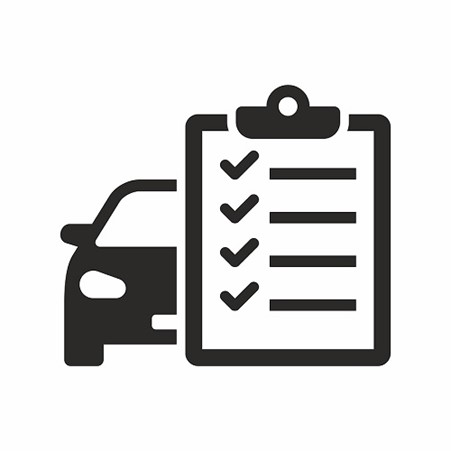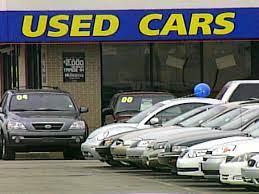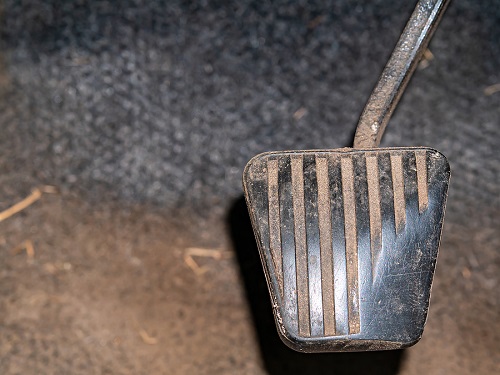September marked the release of the new ‘75’ registration plates for brand-new cars in the UK. Each plate change prompts many drivers to sell or part-exchange their current vehicles, which means a fresh supply of used cars enters the market and buyers enjoy more choice. So, is it time for a test drive? Here’s what you should be looking for.
Buying a car is always exciting, whether it’s brand new or second-hand. September’s number plate changeover creates great opportunities — more cars available, lower demand, and real savings. But that dream can quickly turn into a nightmare if you end up with a car that doesn’t suit you.
The best way to avoid disappointment? A proper test drive. Most dealers offer this service free of charge, and they’re insured to let you drive. So, you’ve got nothing to lose and everything to gain.
Why Test Driving a Used Car Matters

Many buyers skip the test drive stage and rely on research alone, but that’s a mistake. Getting behind the wheel helps you spot potential issues and confirm whether a car is right for you in terms of performance, comfort, space, visibility, and handling.
A test drive doesn’t commit you to buying the car, and if a seller refuses, that’s a clear red flag. With thousands of cars available at any one time, you’ll always find another option.
Before You Go: Pre-Test Drive Checklist
Before heading out, make sure you’re properly prepared. Having the right documents and a plan in place will make your test drive smoother and more effective:
- Driving licence
- Proof of insurance (if required — most dealers cover this)
- Planned route with a mix of roads
- Service history, MOT records, and mileage
1. Decide on a Budget Before You Test Drive
The first step is financial. Work out exactly what you want to spend and stick to it. It’s easy to get tempted by persuasive sales talk, but only test drive cars that fit your budget to avoid disappointment later.
2. First Impressions: What to Check Before Starting the Engine

Before you even sit behind the wheel, take a good look at the car. Are there obvious scratches, dents, rust, or uneven body panels? Check the ground for oil or coolant leaks. Place your hand on the bonnet, if it’s already warm, the seller may be hiding cold-start issues. Inside, make sure the seats are comfortable, the dashboard is intact, and nothing looks worn out or neglected.
3. Take Your Time — How Long Should a Test Drive Be?
A quick spin around the block won’t give you the full picture. Most test drives last between 30 and 60 minutes, though some dealerships offer 24–48 hour trials. However long you’re given, don’t rush. You’ll usually know within an hour whether the car feels right, but it’s worth taking the time to be sure.
4. Getting Comfortable: Driving Position and Fit
Comfort matters just as much as performance. Adjust your seat, steering wheel, and mirrors so everything feels natural. Can you reach the pedals easily? Is the visibility good from all angles? If you can’t get comfortable at this stage, the car may not be right for you.
5. Test the Controls and Dashboard Features
It’s best to familiarise yourself with the car before you set off. Switch on the lights, indicators, and wipers. Try the infotainment or satnav, adjust the heating and air conditioning, and check that no warning lights remain on once the engine starts. The more you know before you drive, the less distracted you’ll be on the road.
6. Use Real-World Roads During Your Test Drive
Don’t just stick to the dealer’s suggested route. Choose roads that reflect your daily driving. Take the car onto the motorway to check stability at speed, through city traffic to see how it handles stop-start driving, and along a few country lanes to judge steering and suspension. Even a quick visit to a car park can help you understand how easy it is to manoeuvre and reverse.
7. Key Components to Test While Driving

Pay attention to how the car behaves in motion. The brakes should feel firm and stop the car in a straight line without pulling. Acceleration should be smooth, without hesitation. The clutch and gearbox should operate cleanly, with no judder or crunching, and the suspension should soak up bumps without rattles. If anything feels off, make a note of it.
8. Use All Your Senses: Noises, Smells and Smoke
A test drive isn’t just about how the car feels to drive. Listen carefully for knocks, whining, or grinding noises. Pay attention to smells — burning oil, fuel leaks, or damp interiors could all point to hidden problems. Finally, watch the exhaust for excessive smoke, which may signal costly engine trouble.
9. Check Boot Space and Everyday Practicality
Practicality is easy to overlook in the excitement of a test drive. Think about how you’ll actually use the car. Will your golf clubs, pushchair, or work equipment fit in the boot? Do child seats clip in securely? Can the rear seats fold down easily if you need extra space? These checks can make a big difference.
10. Size and Parking: Will the Car Fit at Home?
Before committing, consider where you’ll keep the car. Make sure it fits comfortably in your driveway, garage, or regular parking spot. If possible, test this before making a decision — plenty of buyers have been caught out by cars that simply don’t fit.
11. Final Decision: Ask Yourself the Right Questions
Once the drive is over, give yourself a moment to reflect. Did you enjoy driving it? Could you see yourself using it every day? Does it feel like the right fit for your lifestyle? If you hesitate, don’t be afraid to walk away. There will always be another car.
Don’t Forget a Vehicle History Check
Above all, if you’re buying a used car, make sure its past is exactly as it should be. Even the smoothest test drive can’t reveal everything. A history check can uncover things the seller might not tell you — from colour or plate changes to suspicious mileage, or whether the car has ever been stolen or written off.
With a MotorCheck Vehicle Check, you can get peace of mind for just £9.99. The report highlights issues such as:
- Previous damage or insurance write-offs
- Mileage inconsistencies
- Outstanding finance
- Stolen vehicle status
- Colour or plate changes
It’s a small investment that could save you thousands by stopping you from buying a car with a hidden past. Don’t skip this step — always run a MotorCheck report before you commit.
Make the Test Drive Work for You
A test drive isn’t just about seeing if the car moves, it’s about making sure it suits your lifestyle, budget, and expectations. Take your time, ask questions, and trust your instincts. The right car is out there, and a careful test drive will help you find it.
Frequently Asked Questions About Test Driving a Used Car
What do I need for a test drive?
For a test drive, you’ll usually need your driving licence as proof of identity and eligibility to drive. Most dealers provide insurance cover for the test, but it’s worth confirming before you arrive — some may ask for additional proof of cover. If you’re test driving through a private seller, check that their insurance policy allows you to drive the car. It’s also a good idea to plan a suitable route in advance that includes a mix of roads, and to bring any items you regularly use — such as a child seat, golf clubs, or work equipment — so you can test how well they fit in the car.
What should I look for when test driving a car?
A proper test drive is about evaluating how the car performs. Once on the road, test the brakes to ensure they stop firmly and in a straight line. Check that the clutch and gearbox operate smoothly without slipping or crunching. Pay attention to steering response and suspension comfort, and listen carefully for unusual noises. Use all your senses — sight, sound, and smell — to pick up on potential problems that might not be obvious at first glance.
How can I get the most out of a test drive?
To get the most out of a test drive, recreate your everyday driving as closely as possible. Include roads you use often, such as motorways, city traffic, and car parks, to see how the car behaves in real-world situations. Beyond performance, assess comfort and practicality: is the driving position right for you, is visibility clear, are the controls easy to reach, and does the car fit your lifestyle needs such as boot space or child seat fitting? A thorough test drive should confirm whether the car truly works for you.
What is the best advice for me when buying a used car?
The best advice when buying a used car is to set a clear budget, research the model for known issues, and always take a proper test drive. Review the service and MOT history, and run a vehicle history check with MotorCheck to uncover mileage discrepancies, write-offs, or stolen status. Avoid sellers who refuse a test drive or seem evasive.